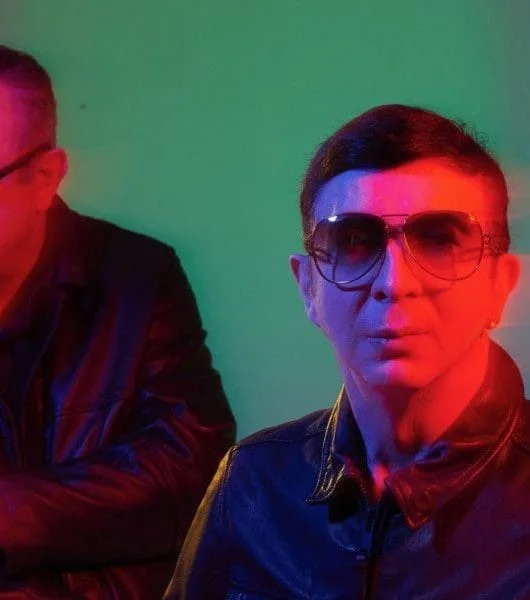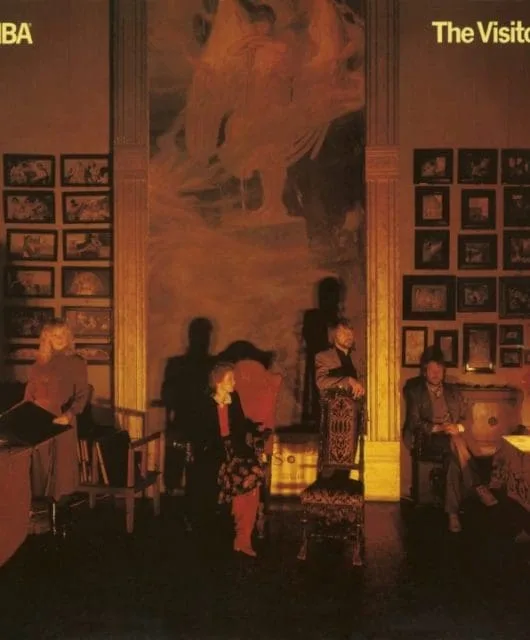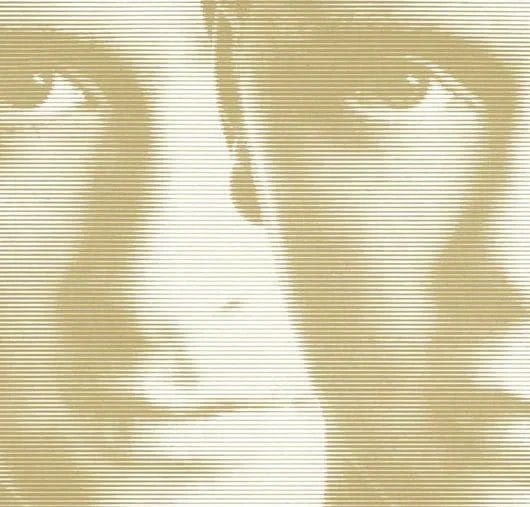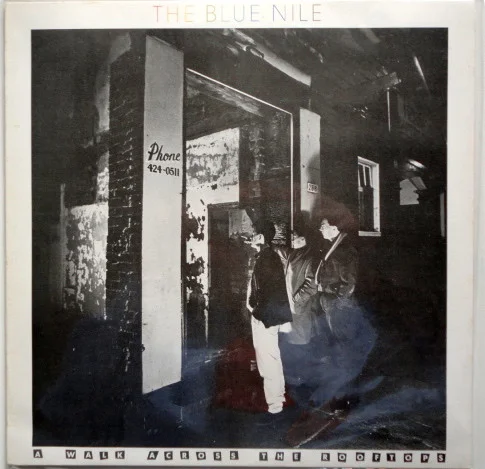Spotlight: Desperately Seeking Susan
By Steve O'Brien | September 15, 2023
 In 1985, after the release of her breakthrough album Like A Virgin, Madonna made her big screen debut in Desperately Seeking Susan, a movie that, almost 40 years on, is regarded as her very best…
In 1985, after the release of her breakthrough album Like A Virgin, Madonna made her big screen debut in Desperately Seeking Susan, a movie that, almost 40 years on, is regarded as her very best…
At the time Desperately Seeking Susan hit the flicks in March 1985, there was a thought in certain quarters that this was some kind of cynical star vehicle.
To be fair, it certainly looked like it. Like A Virgin had exploded just five months before and suddenly here was this grungy, indie-styled rom-com that not only headlined the world’s newest pop sensation, but also included her latest song, Into The Groove.
Hell, it even looked like she was playing herself, so close was her look in the film to her boho-punk on-stage persona.
But actually, when director Susan Seidelman first floated the idea of the 26-year-old Madonna Louise Ciccone playing the part of the uber-cool New York City scenester Susan Thomas to Orion Pictures, they weren’t convinced.
Madonna, at the time, had only released one album, which had peaked at No.8 on the Billboard. She had a modicum of fame, but was far from being a bona fide star.
When Seidelman brought the singer and a small crew to Union Square Park to film a screen test, barely anyone paid any attention. Well, apart from one person who stopped and exclaimed, “Oh look, there’s Cyndi Lauper!”
It was in the middle of Desperately Seeking Susan’s nine and a half week shoot that Madonna’s star truly blew up. Passers-by barely seemed to care that first week of filming, as Seidelman and Madonna shot scenes in the city’s East Village.
By the final week, after Rolling Stone put Madonna on their cover, the singer had become so ubiquitous she needed on-set security.
Anyone watching Desperately Seeking Susan in 1985 might have speculated that, going forward, Madonna could well have had a parallel career as a big league screen star. Her acting work, however, has become something of a joke since then.
She essayed many roles in the following decade and a half, but most of those movies were either box office bombs or, in the few good ones, she was often the weak link.
She even walked home with a Golden Raspberry Award for Worst Actress for 1986’s adventure flick Shanghai Surprise and the less said about 2002’s comic romance Swept Away (regularly listed as one of the worst movies ever made) the better.
- Read more: Album By Album – Madonna
So what made Desperately Seeking Susan different? Well, in many ways it reflected a world Madonna knew every nook and cranny of.
As a record of a pre-gentrified New York City, Susan Seidelman’s film is priceless, up there with Mean Streets, Saturday Night Fever, Dog Day Afternoon and Do The Right Thing as a snapshot of the Big Apple in all its grungy, bohemian glory.
There’s little that’s lacquered about Desperately Seeking Susan. This wasn’t a major studio picture, made by a seasoned filmmaker and starring a rollcall of L.A. A-listers.
Seidelman had directed just one movie before this, a micro-budget indie titled Smithereens, and it was that movie’s scuzzy, punk-rock sensibility that Orion Pictures producer Barbara Boyle needed for Desperately Seeking Susan.
Which is why Seidelman wanted a sheen of authenticity to her second feature. Orion were initially leaning towards an established actress for the role of Susan, floating such names as Kim Cattrall, Ellen Barkin, Melanie Griffith and Jennifer Jason Leigh.
But Seidelman had kept hearing about this singer named Madonna (she was to later find out they lived just two blocks from each other) and eventually caught one of her videos on MTV.
“I could see the camera liked her,” the director told The Hollywood Reporter’s It Happened In Hollywood podcast. Seidelman floated Madonna’s name to then-Orion Pictures chief Mike Medavoy but he was reluctant to give an unproven actor such a significant role.
Fortunately for Seidelman, Medavoy’s teenage son backed the idea, telling his father he thought Madonna was ‘cute’.
But it’s not just Madonna’s presence that helps give the movie that slick of realness. Seidelman peppered the film with hip, young New York City faces, including performance artist Ann Magnusson, musician and painter John Lurie, stand-up Rockets Redglare, Ambitious Lovers frontman Arto Lindsay, punk singer Richard Hell and even triplets Edward, David and Robert Shafran, later the subject of the award-winning documentary, Three Identical Strangers.
Rising star Rosanna Arquette was cast as Roberta, the starry-eyed romantic who becomes infatuated by Susan after seeing a series of messages Susan and her boyfriend Jim (Robert Joy) leave each other in the personal ads section of the local newspaper.
Roberta becomes so obsessed with Susan that she follows her around the city and even starts dressing like her, which eventually leads – as these things so often do – to Roberta being mistaken for Susan, not helped by an accident which leaves her with amnesia.
Throw in a mob killing and a set of earrings once worn by Nefertiti and you’ve got a glorious screwball comedy, a sort of punk reimagining of the kind of movies Howard Hawks was making in the 1930s.
“I was cast first,” Rosanna Arquette told Vulture in 2020, “and then they told me about this pop star that was just blowing up while [the casting] was happening. Suddenly it was like, ‘Who’s this beautiful girl singing this pop song?’ I remember watching her in the Lucky Star video and just going, ‘Oh my god.’ It was electric.
- Read more: The rise of Madonna
“Everybody at that time fell in love with her. Including me. I remember her cool outfit — I’d just got one too, and I wasn’t wearing it, but the Agnès B. pencil skirt. Her whole look, with the black rubber bracelets — she just had this whole vibe.”
Few of the actors in Desperately Seeking Susan were marquee names at the time. Though it has the look now of an expensive studio production, in reality the film was a modest indie affair.
It had a budget of just $5 million, small fry compared to some of 1985’s other big hitters ($19 million for Back To The Future, $25 million for Rambo: First Blood Part II and $28 million for Rocky VI).
Arquette had headlined a handful of films before Desperately Seeking Susan but none had been hits. And it was only the second film for Aidan Quinn, cast as Roberta’s love interest, Dez (Bruce Willis had also been considered) and the fifth for Will Patton as the murderous Wayne Nolan.
Then there are the various soon-to-famous faces that crop in startlingly small roles, such as John Turturro as the Magic Club’s MC, stand-up comedian Steven Wright as one of Roberta’s husband’s colleagues and Giancarlo Esposito (later Gus in Breaking Bad) as a blink-and-you’ll-miss-him Street Vendor.
Though by the time it arrived in cinemas Desperately Seeking Susan looked like a major event movie, the truth is, it was always a small, independent picture, populated by mostly unknown actors.
By the time Desperately Seeking Susan came out it was Madonna, the least experienced actor on that set, that was its sole star attraction.
“[Rosanna Arquette and Madonna] got along fine during the making of the film,” Susan Seidelman told The Hollywood Reporter. “But Rosanna had been the star and the other character was going to be the unknown or the up-and-coming star. And suddenly the pressure of the film being suddenly called ‘the Madonna movie’ … that has to be difficult.”
It didn’t help the picture’s legitimacy that Desperately Seeking Susan looked like an extension of the Madonna publicity machine.
It might have been different if Madonna had been playing an L.A. lawyer or an 18th century debutante, dolled up in an ivory-coloured court dress. But no, here she was, seemingly playing a variation of herself. Even most of Susan’s clothes were Madonna’s.
Seidelman has said that costume designer Santo Loquasto went to the singer’s apartment and was allowed to pull out any item of clothing he felt suited Susan. That included a pair of orange sweatpants with the initials ‘MC’ on them – for Madonna Ciccone.
One item that didn’t come from Madonna’s wardrobe, however, was the iconic pyramid jacket that sets the plot in motion (in the film, Madonna exchanges it in a thrift shop, after which Roberta then buys it, which leads to her being mistaken for Susan).
“That was Santo’s invention,” Seidelman recalled. “Originally Madonna didn’t like it. It’s weird because that pyramid jacket has become such a big part of her persona of that time.”
“I shared a lot with Susan,” Madonna said on set in 1984. “She charms her way into every situation, gets guys to take her to dinner and girlfriends to let her stay in their apartments. She borrows their clothes and trades and swaps and barters. She’s a clever con artist and doesn’t let you know when you’re being conned.”
However subversive the movie is generally, it ends on a fairly conventional note, with Roberta staying with Dez and Susan with Jim, a climax that wasn’t in Leora Barish’s original script.
“The original ending was that they didn’t go off with the guys – they go off together on an adventure, and you see them on camels in the desert, in the Sahara. Without the guys,” Arquette told Vulture. “I think that ending is such a better ending and I wish they would’ve kept it. Especially nowadays!
“That’s what Roberta was trying to get away from – the stereotype. It wasn’t happily ever after in the original script. I fell in love with that idea and I was very disappointed when they cut that out.”
Shooting finished shortly before Thanksgiving in 1984 and with a locked-in release date of 29 March (Orion were keen to capitalise on Madonna’s new-found fame), there was little time to waste on post-production and marketing.
“Orion’s idea for posters included one with Madonna standing in front of a brick wall and Rosanna peeping over it,” producer Midge Sanford recalled to Yahoo. “Another had Madonna’s face reflected on a toaster and Rosanna’s on a piece of toast popping out.
“‘We didn’t make Mr Mom,’ I said. All the people in the room were middle-aged men who didn’t get the movie. A marketing guy looked at the slide and said, ‘If you put two women on a poster, people will think it’s a lesbian movie.’”
In the end, Orion did put two women on the poster, in an iconic photo by Herb Ritts. In it, a smoking Madonna has her arm round Rosanna Arquette, both dressed near-identically. “It’s a life so outrageous,” the tagline reads, “it takes two women to live it.”
Desperately Seeking Susan would go on to gross $1,526,098 in its first weekend, making $27,398,584 in the US alone. In the UK, where it opened on 6 September, it grossed £1,175,133 in its first two days. Madonna-mania had arrived.
Even reviewers fell for this spunky, spirited rom-com. Pauline Kael, the doyen of film reviewers in the States, raved about Madonna, calling her “an indolent, trampy goddess”, while The New York Times included Desperately Seeking Susan in their list of the best films of 1985. In 2022, Rolling Stone magazine ranked it among their 100 Greatest Movies Of The 1980s, calling it “a classic of its particular era”.
- Read more: Who’s That Girl: Madonna on film
Thirty-eight years on from its release, it’s still Madonna’s best film, and the best movie from Susan Seidelman, too. The director followed it up with a flop sci-fi rom-com titled Making Mr Right, and received a critical pasting after her 1989 adaptation of Fay Weldon’s 1983 novel The Life And Loves Of A She-Devil.
She journeyed back to New York in 1998 to direct the pilot episode of HBO’s Sex And The City: “I think Darren [Star, creator] was a fan of Desperately Seeking Susan, and this was a New York show with female stories so he wanted what I could bring to it,” Seidelman told The Guardian in 2022. “But the show got a little less gritty and more glossy in later seasons.”
Madonna followed up Desperately Seeking Susan the following year with Shanghai Surprise, an adventure comedy produced by George Harrison in which she co-starred with her then-squeeze Sean Penn. It was a disaster, grossing just $2.3 million against a budget of $15 million.
It would be the first of a series of big-screen calamities for the singer. She hasn’t acted on-screen since her cameo as a fencing instructor in the James Bond movie, Die Another Day in 2002.
Today, Desperately Seeking Susan acts as a precious snapshot not just of a long-lost New York City but of our biggest and most provocative pop star, on the cusp of global stardom. By the time the movie was released in March ‘85, nobody was mistaking Madonna for Cyndi Lauper anymore.

Steve O'Brien
Steve O’Brien is a writer who specialises in music, film and TV. He has written for magazines and websites such as SFX, The Guardian, Radio Times, Esquire, The New Statesman, Digital Spy, Empire, Yours Retro, The New Statesman and MusicRadar. He’s written books about Doctor Who and Buffy The Vampire Slayer and has even featured on a BBC4 documentary about Bergerac. Apart from his work on Classic Pop, he also edits CP’s sister magazine, Vintage Rock Presents.www.steveobrienwriter.com





